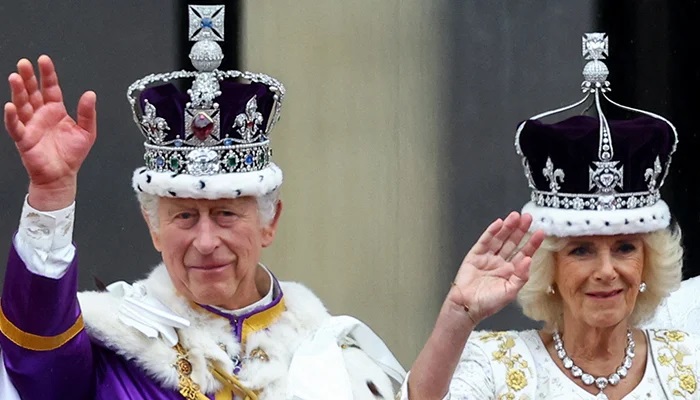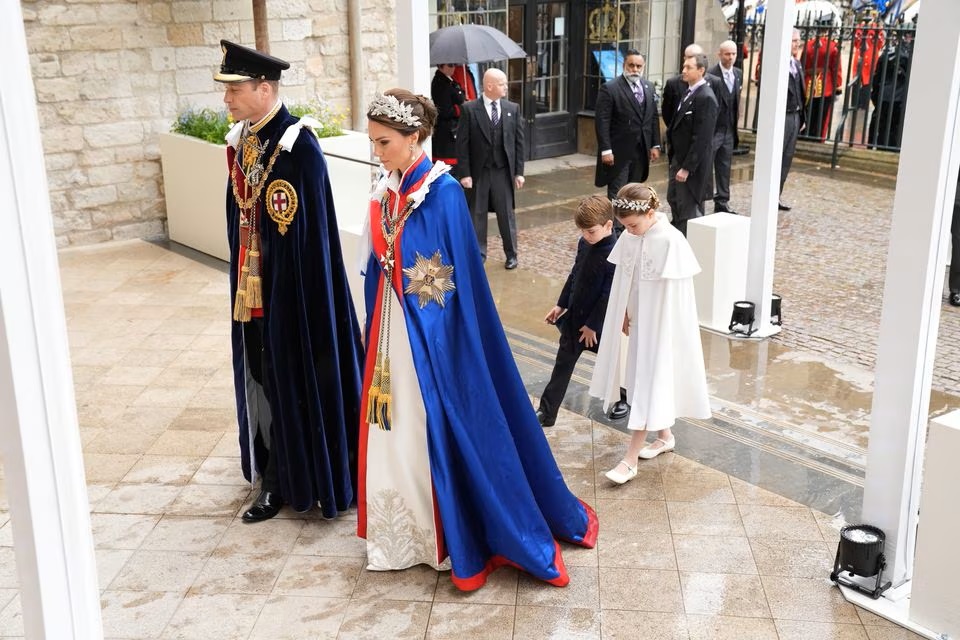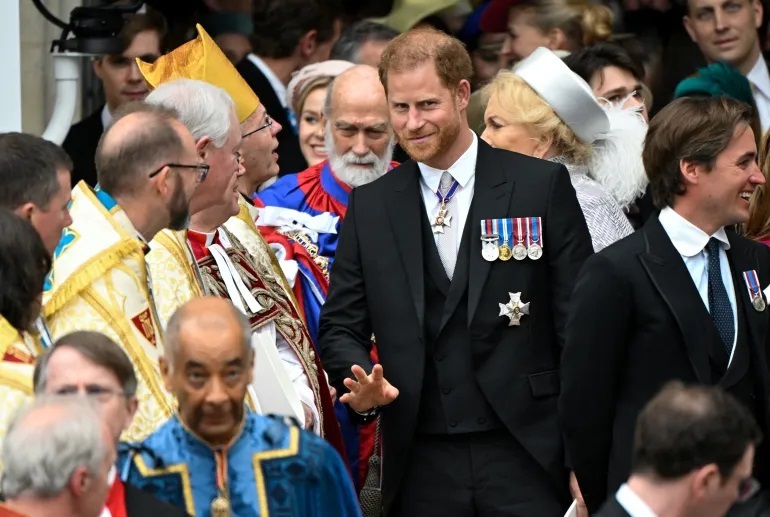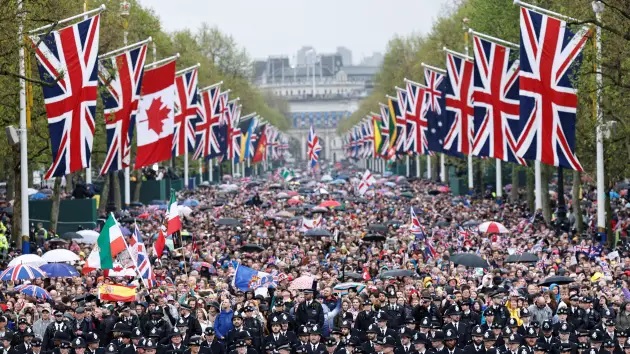King Charles III has been crowned in the United Kingdom’s biggest ceremonial event for seven decades, in the presence of the royal family, 4,000 British and Commonwealth troops, about 100 world leaders and a television audience of millions.
The Archbishop of Canterbury Justin Welby placed the 360-year-old St Edward’s Crown on Charles’s head in Westminster Abbey on Saturday, during a solemn two-hour service.
Charles’s second wife Camilla was also crowned queen with the Queen Mary’s Crown in lavish event at Westminster Abbey.

The king swore oaths to govern justly and uphold the Church of England, of which he is the titular head. He was then hidden from watching eyes by a screen for the most sacred part of the ceremony when he was anointed on his hands, head and breast with holy oil consecrated in Jerusalem.
After being presented with symbolic regalia, Welby placed the St Edward’s Crown on his head and the congregation cried out “God save the king”.
“God save King Charles. Long live King Charles. May the king live forever,” the congregation at the abbey said after a trumpet fanfare.
Charles’s eldest son and heir Prince William, 40, then knelt before his father to pledge his loyalty as his “liege man of life and limb”.

Gun salutes were fired at the Tower of London and across the capital, the nation, in Gibraltar, Bermuda and on ships at sea.
The ceremony – televised for only the second time – was an attempt to present a forward-looking monarchy, with those involved reflecting a more diverse country and all its religions.
King Charles III prayed to be a “blessing” to people of “every faith and conviction”, while Prime Minister Rishi Sunak said the coronation was “a cherished ritual through which a new era is born”.
Prince Harry, the second born, was also present at his father’s coronation ceremony but did not play a significant role. Prince Harry’s wife Meghan Markle remained in California with children Lilibet and Archie.

More than 2,000 people were invited to attend King Charles III's coronation on Saturday, and many of those guests are high-profile royals themselves. Along with members of the British royal family and leaders of the government — like British Prime Minister, Rishi Sunak, who spoke at the ceremony — world leaders from other countries were also attendance.
Delegates from countries in the British commonwealth attended, carrying flags for their countries as they entered Westminster Abbey.
After the service, Charles and Camilla, 75, departed in the four-ton Gold State Coach built for George III, the last king of Britain’s American colonies, to ride to Buckingham Palace in a one-mile procession of 4,000 military personnel from 39 nations.
Meanwhile hundreds of soldiers in scarlet uniforms and black bearskin hats lined the route along The Mall, the grand boulevard leading to the palace, in what is the largest ceremonial event of its kind in Britain since the coronation of Charles’ mother.

Tens of thousands of people ignored pouring rain to mass in a crowd more than 20 deep in some places to watch what some saw as a moment of history.
However. not everyone in the crowd was supportive of the new king. Members from the anti-monarchy group Republic had gathered near Trafalgar Square in London a few hours ahead of the coronation ceremony for a “Not My King” protest. Graham Smith, the leader of the group, was among six people arrested before the coronation ceremony. But they were a minority with most drawn to the occasion by its unique nature or family connections.
The UK’s last coronation took place in 1953 when Queen Elizabeth II was crowned at the age of 27. Since 1601, there has only been one coronation in the month of May.